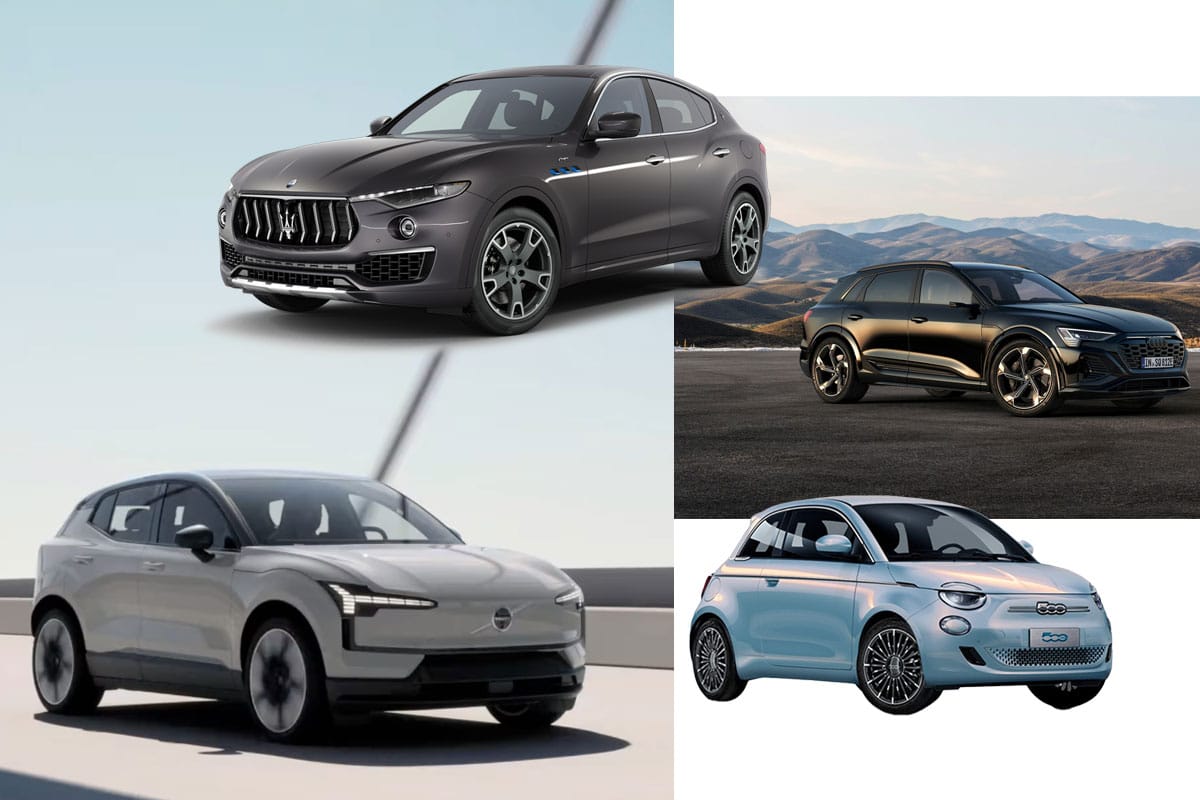
In the last few months there has been a wave of new electric vehicle announcements. Everything from the imminent arrival of the Renault Megane E-Tech to Australian shores, down to the sad delay of the supremely sexy Maserati Levante EV.
It has reopened a decidedly prickly can of worms - ‘will your next car be an electric one?’
Almost everyone you speak to will have a strongly-worded view around electric vehicles.
I’ve heard them all. From “electric vehicle adoption is inherently esoteric and classist”. All the way to “the purchase of new petrol cars is tantamount to environmental vandalism”. These, and everything in between.
Oddly enough, despite the polarity of these viewpoints, they both provide a somewhat accurate look at the current electric vehicle market.
It is true that fossil fuels are the largest contributor to our climate crisis, petrol being one of the biggest contributors. But yes, some EVs are indeed currently beyond the reach of the average person.
Most of us understand that eventually we’ll all end up in an electric car. Much like the horse and cart, petrol and diesel cars will soon be an outdated form of transport. The true unknown is how quickly this transition to electric will occur.
We as consumers may not have a choice. Canberra became the first state or territory in Australia to draw a line in the sand. It has banned the sale of all new petrol cars from 2035. The action follows the decision by the EU to also ban the sale of all new petrol cars from 2035. And certainly, these won’t be the last petrol car bans.
It will be sooner, rather than later, that consumers will need to take up electric vehicles.
Australians are undeniably interested in electric cars. How could you not be with petrol prices the way they are? And while EVs are more expensive to buy, they are much cheaper to run. Recharging is cheaper than buying petrol. Servicing costs are cheaper too. According to Drive, an EV will save you between $1320 and $3070 every year on average.
2024 is also promising Australian drivers an array of new models we haven’t seen previously. The electric Fiat 500 arrived in 2023. The Renault Megane E-Tech will hit showrooms any day. The Polestar 4 is also coming soon.
As the owner of an EV myself, I can highly recommend it. My partner and I decided to share a car to make it more affordable. Now that I’ve driven one, it would take a very impressive model to have me ever move back to a fully petrol car.
So, what’s the hold up? Why aren’t Australians snapping up more electric cars when we clearly want them?
Of course, it’s always more complicated than that.
The power problem
How will you charge your car? That is not a simple question for the growing number of owners who live in apartments, townhouses or shared accommodation.
If you’re lucky enough to have a dedicated car space in your living arrangement, the availability to actually charge your car becomes a strata issue. And the current attitude of strata schemes to EVs and charging infrastructure is woeful.
If you wish to install a charger in your space, you will need strata approval. Yes, even if the space is on your title. The walls and wiring will still be considered common property. Strata approval for this change often requires a ‘consolidation of the strata by-laws’. Which is a fancy way of saying, the strata manager has to add a paragraph into the rulebook for your building. This simple change can cost thousands. I personally was quoted $1800 by my strata manager. It’s a hefty sum to pay for nothing more than the permission to install a charger.
Some people will be lucky enough to have a charging outlet in their space already. But again, you will likely need strata approval to use it. Many outlets would be connected to common power. An offer for you to pay extra for the power you use is at the discretion of the strata and it can impose harsh penalties should you try to use this power source without an agreement in place.
And this is if you have a car space at all. Many of those who live in apartments or in inner-city locations do not have a car space at all.
Of course, this is an even more complicated question for the 31% of Australians who rent. Renters don’t just have to deal with the same strata scheme and space barriers but their landlords too.
It leads us to the current situation we’re in - electric vehicles are only feasible options for Australians who own (not rent) a free-standing home. A limited demographic indeed.
Can we afford to pay the climate cost?
Not all costs are monetary. There is a real cost to the climate in slowing our adoption to electric vehicles.
By now you’ve probably heard that the top 100 companies in the world are responsible for 71% of the world’s carbon emissions. Among the top 10 worst are Saudi Aramco, National Iranian Oil Co, ExxonMobil Corp, Petróleos Mexicanos, Royal Dutch Shell PLC and China National Petroleum Corp. These are all oil and petrol companies.
It is in our best interest as consumers to cease our use of petrol as quickly as we can. Not only does our personal use of petrol add smog into the air, but our purchase of that petrol helps to fund companies that are doing immeasurable harm to our planet.
Next to using a green energy provider, moving to an EV is one of the most impactful things you can do to preserve the Earth for future generations.
Climate change is only accelerating, we need to act quickly if we wish to turn it around.
There isn’t enough time to go through all of the terrible consequences of climate change, but in short it is causing fire, floods, death, poverty and homelessness. It’s also causing everything from food to insurance to become more expensive - exacerbating the current cost of living crisis.
Drastically decreasing our consumption of fossil fuels is essential if we as a society wish to avoid further impacts from our changing climate. And for this, broadscale adoption of electric cars is essential.
How much do you need to earn to afford an EV?
If you’re not purchasing as a couple, price understandably is barrier. The cheapest EV in Australia at the time of writing is around $38,000 AU.
Let’s assume that the average buyer puts down a 20% deposit ($8,000) and finances the remaining amount via a secured car loan at the representative rate (8.49%) of a Big Four Bank. This puts the repayment at $740 per month. This means you’d need to earn $120,000 per year in order to keep this payment at 10% or less of your monthly after-tax income. Less than 14% of Australian full time workers make $120,000 or more.
If only 14% of Australia’s working population can comfortably afford even the cheapest EV on the market, you can see how access to this technology becomes an issue of class and privilege.
But of course, now that electric cars have been in Australia for a few years, the second hand market has finally grown to a reasonable size. This of course allows Australians to access the cars they want at a preferrable price point. And with interest rates set to start dropping from the middle of 2024, car finance will become more accessible too.
When will EVs become more accessible?
Technology becomes cheaper over time. As humans become more efficient at creating and manufacturing, products like televisions, phones and computers have all become more affordable relative to income.
The EU ban on new petrol cars has been an important step in this direction. It’s encouraged manufacturers to speed up their production of electric options, and offer further price diversity on both ends. Even a performance brand like Porsche has now dipped its toes into the pool with the luxuriously alluring Macan E.
Some of these positive benefits have trickled down to us. In 2015, there wasn’t a full electric car available in Australia that fell under $60,000. Today, you can find roughly 10 that are more affordable than that.
However if we look overseas, we can see that Australians have still had a raw deal when it comes to choice and price. In the USA, drivers have a choice of options under $30,000 US. In Europe, there are some models that come in under 20,000 EUROS ($30,000 AU). Additionally, Europe and the US have access to a whole host of models that are not available in Australia - like the adorable Volkswagen e-Up.
Car manufacturers have historically chosen to send their best electric cars to countries with better electric vehicle policies. Everything from taxation policies and investment in charging infrastructure affects this decision. The result is that Australians were left with the unpopular models.
But the tides are turning. As Australian consumers continue to show their hunger for electric vehicles, we’re finally seeing the cars we want arrive on Australian shores. As mentioned, 2023 and 2024 has seen dozens of new EV options drive into Australian showrooms.
So, will your next car be an electric one?
Yes, we need better public charging infrastructure. Yes, we need better government policies. But, in 2024 your choice and access has never been better.



